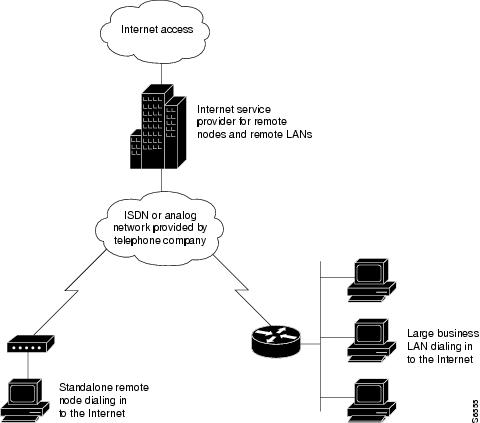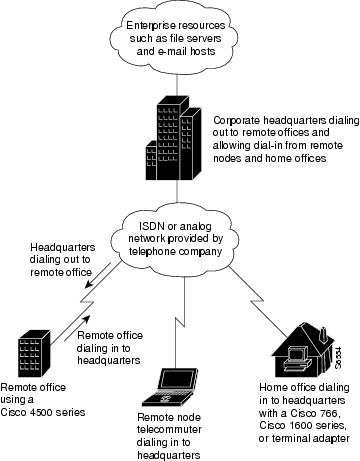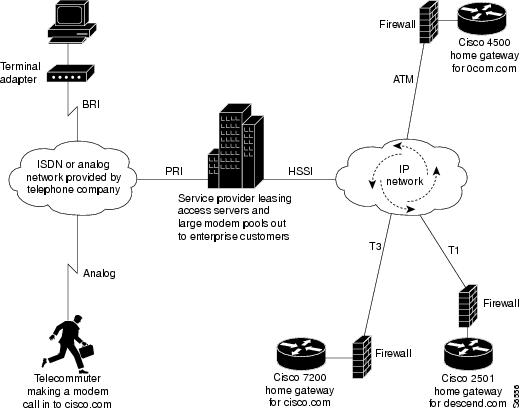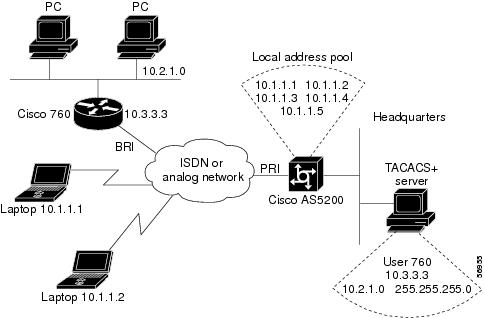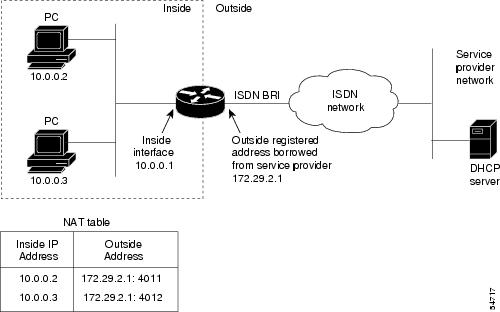

-
Dial Configuration Guide, Cisco IOS Release 15M&T
- Part 1: Dial Interfaces, Controllers, and Lines
-
Part 2: Modem Configuration and Management
-
Overview of Modem Interfaces
-
Configuring and Managing Integrated Modems
-
1- and 2-Port V.90 Modem WICs for Cisco 2600 and Cisco 3600 Series Multiservice Platforms
-
Call Tracker show Commands Extensions
-
Cisco NM-8AM-V2 and NM-16AM-V2 Analog Modem Network Modules with V.92
-
MICA and NextPort Modem Tech-Support Command Additions
-
PIAFS Wireless Data Protocol Version 2.1 for Cisco MICA Modems
-
V.92 and V.44 Support for Digital Modems
-
V.92 Modem on Hold for Cisco AS5300 and Cisco AS5800 Universal Access Servers
-
V.92 Modem on Hold for Cisco AS5350, Cisco AS5400, and Cisco AS5850 Universal Gateways and Cisco AS5800 Universal Access Servers
-
V.92 Quick Connect for Cisco AS5300 and Cisco AS5800 Universal Access Servers
-
V.92 Quick Connect for Cisco AS5350, Cisco AS5400, and Cisco AS5850 Universal Gateways and Cisco AS5800 Universal Access Servers
-
V.92 Reporting Using RADIUS Attribute v.92-info
-
Configuring and Managing Cisco Access Servers and Dial Shelves
-
Configuring and Managing External Modems
-
Modem Signal and Line States
-
Creating and Using Modem Chat Scripts
-
Cisco Modem User Interface
-
Modem Script and System Script Support in Large-Scale Dial-Out
-
-
Part 3: ISDN Configuration
-
Configuring ISDN BRI
-
Leased and Switched BRI Interface for ETSI NET3
-
ISDN BCAC and Round-Robin Channel Selection Enhancements
-
Configuring Virtual Asynchronous Traffic over ISDN
-
Configuring Modem Use over ISDN BRI
-
Configuring X.25 on ISDN
-
Configuring X.25 on ISDN Using AO/DI
-
Configuring ISDN on Cisco 800 Series Routers
-
- Part 4: Signaling Configuration
-
Part 5: Dial-on-Demand Routing Configuration
-
Preparing to Configure DDR
-
Configuring Legacy DDR Spokes
-
Configuring Legacy DDR Hubs
-
Configuring Peer-to-Peer DDR with Dialer Profiles
-
Dialer Map VRF-Aware for an MPLS VPN
-
Dialer Persistent
-
PPPoE Client DDR Idle-Timer
-
Redial Enhancements
-
Rotating Through Dial Strings
-
Configuring Dialer CEF
-
CEF Support for Dialer Profiles on Cisco 7500 Routers
-
IPv6 Cisco Express Forwarding Switching on Dialer Interfaces
-
Configuring Snapshot Routing
-
- Part 6: Dial-Backup Configuration
- Part 7: Dial-Related Addressing Services
- Part 8: Virtual Templates and Profiles
-
Part 9: PPP Configuration
-
Configuring Asynchronous SLIP and PPP
-
Optimized PPP Negotiation
-
Customer Profile Idle Timer Enhancements for Interesting Traffic
-
Multilink PPP Minimum Links Mandatory
-
Configuring Media-Independent PPP and Multilink PPP
-
PPP/MLP MRRU Negotiation Configuration
-
Troubleshooting Enhancements for Multilink PPP over ATM Link Fragmentation and Interleaving
-
Multichassis Multilink PPP
-
- Part 10: Callback and Bandwidth Allocation Configuration
- Configuring Large-Scale Dial-Out
- Part 11: Dial Access Specialized Features
- Part 12: Dial Access Scenarios
Table Of Contents
Dial Networking Business Applications
Dial Networking for Service Providers and Enterprises
Dial Networking Business Applications
This chapter provides an introduction to common dial networking scenarios used by service providers and enterprises and includes the following sections:
•
Dial Networking for Service Providers and Enterprises
•
Common Dial Applications
•
IP Address Strategies
Providing dial access means to set up one or more access servers or routers to allow on-demand connectivity for individual remote nodes or remote offices. The dial network solutions described in this chapter are based on business case scenarios. Depending on your business application, dial access has different implementations.
Dial Networking for Service Providers and Enterprises
Service providers tend to supply public and private dial-in services for businesses or individual home users. Enterprises tend to provide private dial-in access for employees dialing in from remote LANs (such as a remote office) or individual remote nodes (such as a telecommuter). Additionally, there are hybrid forms of dial access—virtual private dialup networks (VPDNs)—that are jointly owned, operated, and set up by both service providers and enterprises.
Figure 1 displays a common dial topology used by an Internet service provider (ISP). The central dial-in site is owned and controlled by the ISP, who only accepts dial-in calls. Enterprises and individual remote clients have no administrative control over the point of presence (POP) of the ISP.
Note
Many additional dial network strategies exist for different business applications. This overview is intended to provide only a sample of the most common dial business needs as experienced by the Cisco dial escalation team.
Figure 1 Sample Dial Network for an ISP
Enterprises can provide bidirectional access services with remote LANs and one-way dial-in access for standalone remote nodes. Bidirectional access means that remote LANs can dial in to the enterprise, and the enterprise can dial out to the remote LANs. A remote LAN can be a large remote office or a small home office. A standalone remote node can be an individual PC that is dynamically assigned an IP address from the modem pool of the enterprise. In most cases, an enterprise has complete administrative control over its local and remote devices. (See Figure 2.)
Figure 2 Sample Dial Network for an Enterprise
Service providers and enterprises both benefit from a hybrid dial solution called VPDN. Service providers offer virtually private access to enterprises by providing the dial-in access devices for the enterprise to use (for example, access servers and modem pools). In this solution, service providers construct the networking fabric for city-to-city dial connectivity for the enterprise. Enterprises provide only a home gateway router (with no attached modems) and a WAN connection to their service provider. VPDN dial solutions enable the enterprise to continue to maintain complete administrative control over its remote locations and network resource privileges. (See Figure 3.)
Figure 3 Sample VPDN for Service Providers and Enterprises
Common Dial Applications
The hardware and software configuration designs for dial networks are derived from business operations needs. This section describes several of the most common business dial scenarios that Cisco Systems is supporting for basic IP and security services.
Refer to the scenario that best describes your business or networking needs:
•
The following dial scenarios are commonly used by service providers. For detailed description and configuration information, see the chapter "Telco and ISP Dial Scenarios and Configurations" later in this manual.
–
Scenario 1, Small- to Medium-Scale POPs
(one or two access servers at the central dial-in site)–
Scenario 2, Large-Scale POPs
(more than two access servers at the central dial-in site, Multichassis Multilink PPP or MMP)–
Scenario 3, PPP Calls over X.25 Networks
•
The following dial scenarios are commonly used by enterprises. For detailed description and configuration information, see the chapter "Enterprise Dial Scenarios and Configurations."
–
Scenario 1, Remote Offices and Telecommuters Dialing In to a Central Site
–
Scenario 2, Bidirectional Dial Between Central Sites and Remote Offices
–
Scenario 3, Telecommuters Dialing In to a Mixed Protocol Environment
IP Address Strategies
Exponential growth in the remote access router market has created new addressing challenges for ISPs and enterprise users. Companies that use dial technologies seek addressing solutions that will:
•
Minimize Internet access costs for remote offices
•
Minimize configuration requirements on remote access routers
•
Enable transparent and dynamic IP address allocation for hosts in remote environments
•
Improve network security capabilities at each remote small office, home office site
•
Conserve registered IP addresses
•
Maximize IP address manageability
Remote networks have variable numbers of end systems that need access to the Internet; therefore, some ISPs are interested in allocating just one IP address to each remote LAN.
In enterprise networks where telecommuter populations are increasing in number, network administrators need solutions that ease configuration and management of remote routers and provide conservation and dynamic allocation of IP addresses within their networks. These solutions are especially important when network administrators implement large dial-up user pools where ISDN plays a major role.
Choosing an Addressing Scheme
Use an IP addressing scheme that is appropriate for your business scenario as described in the following sections:
•
Classic IP Addressing
•
Cisco Easy IP
Additionally, here are some addressing issues to keep in mind while you evaluate different IP address strategies:
•
How many IP addresses do you need?
•
Do you want remote clients to dial in to your network and connect to server-based services, which require statically assigned IP addresses?
•
Is your primary goal to provide Internet services to a network (for example, surfing the web, downloading e-mail, using TCP/IP applications)?
•
Can you conduct business with only a few registered IP addresses?
•
Do you need a single contiguous address space, or can you function with two non-contiguous address spaces?
Classic IP Addressing
This section describes two classic IP addressing strategies that you can use to set up dial-in access. Classic IP addresses are statically or dynamically assigned from your network to each site router or dial-in client. The IP address strategy you use depends on whether you are allowing remote LANs or individual remote clients to dial in.
A remote LAN usually consists of a single router at the gateway followed by multiple nodes such as 50 PCs. The IP address on the gateway router is fixed or statically assigned (for example, 3.3.3.3). This device always uses the address 3.3.3.3 to dial in to the enterprise or service provider network. There is also a segment or subnet associated with the gateway router (for example, 2.1.1.0 255.255.255.0), which is defined by the dial-in security server.
For individual remote clients dialing in, a specific range or pool of IP addresses is defined by the gateway access server and dynamically assigned to each node. When a remote node dials in, it receives an address from the specified address pool. This pool of addresses usually resides locally on the network access server. Whereas, the remote LANs have predefined or statically assigned addresses. The accompanying subnet is usually statically assigned too. (See Figure 4.)
Figure 4 Classic IP Address Allocation
Here are some advantages and disadvantages of manually assigning IP addresses:
•
Advantages
–
Web servers or Xservers can be stationed at remote locations.
–
Since addresses are members of your network, they are perfectly transparent.
•
Disadvantages
–
IP address assignments can be difficult to administer or manage. You may also need to use complicated subnetting configurations.
–
Statically assigned IP addresses use up precious address space.
–
Strong routing configuration skills are usually required.
Cisco Easy IP
Two of the key problems facing the Internet are depletion of IP address space and scaling in routing. The Cisco Easy IP feature combines Network Address Translation (NAT) and PPP/Internet Protocol Control Protocol (IPCP). This feature enables a Cisco router to automatically negotiate its own registered WAN interface IP address from a central server and allows all remote hosts to access the global Internet using this single registered IP address. Because Cisco Easy IP uses existing port-level multiplexed NAT functionality within the Cisco IOS software, IP addresses on the remote LAN are invisible to the Internet.
Cisco Easy IP Component Technologies
Cisco Easy IP solution is a scalable, standards-based, "plug-and-play" solution that comprises a combination of the following technologies:
•
NAT—Described in RFC 1631. NAT operates on a router that usually connects two or more networks together. Using Cisco Easy IP, at least one of these networks (designated as "inside" or "LAN") is addressed with private (RFC 1918) addresses that must be converted into a registered address before packets are forwarded onto the other registered network (designated as "outside" or "WAN"). Cisco IOS software provides the ability to define one-to-one translations (NAT) as well as many-to-one translations (Port Address Translation [PAT]). Within the context of Cisco Easy IP, PAT is used to translate all internal private addresses to a single outside registered IP address.
•
PPP/IPCP—Defined in RFC 1332. This protocol enables users to dynamically configure IP addresses over PPP. A Cisco Easy IP router uses PPP/IPCP to dynamically negotiate its own WAN interface address from a central access server or DHCP server.
Figure 5 shows an example of how Cisco Easy IP works. A range of registered or unregistered IP addresses are used inside a company's network. When a dial-up connection is initiated by an internal node, the router uses the Cisco Easy IP feature to rewrite the IP header belonging to each packet and translate the private address into the dynamically assigned and registered IP address, which could be borrowed from a service provider.
Figure 5 Translating and Borrowing IP Addresses
For a more detailed description of how Cisco Easy IP works, see the chapter "Configuring Cisco Easy IP."
Key Benefits of Using Cisco Easy IP
The Cisco Easy IP feature provides the following benefits:
•
Reduces Internet access costs by using dynamically allocated IP addresses. Using dynamic IP address negotiation (PPP/IPCP) at each remote site substantially reduces Internet access costs. Static IP addresses cost more to purchase compared to dynamically allocated or rented IP addresses. Cisco Easy IP enables you to rent IP addresses. In addition, dynamically assigned IP addresses saves you time and money associated with subnet mask configuration tasks on hosts. It also eliminates the need to configure host IP addresses when moving from network to network.
•
Simplifies IP address management. Cisco Easy IP enables ISPs to allocate a single registered IP address to each remote LAN. Because only a single registered IP address is required to provide global Internet access to all users on an entire remote LAN, customers and ISPs can use their registered IP addresses more efficiently.
•
Conserves registered IP addresses. Suppose you want to connect to the Internet, but not all your hosts have globally unique IP addresses. NAT enables private IP internetworks that use nonregistered or overlapping IP addresses to connect to the Internet. NAT is configured on the router at the border of a stub domain (referred to as the inside network) and a public network such as the Internet (referred to as the outside network). The private addresses you set up on the inside of your network translate in to a single registered IP addresses on the outside of your network.
•
Provides remote LAN IP address privacy. Because Cisco Easy IP uses existing port-level multiplexed NAT functionality within Cisco IOS software, IP addresses on the remote LAN are invisible to the Internet, making the LAN inherently more secure. As seen by the external network, the source IP address of all traffic from the remote LAN is the single registered IP address of the WAN interface for the Cisco Easy IP router.
Cisco and the Cisco Logo are trademarks of Cisco Systems, Inc. and/or its affiliates in the U.S. and other countries. A listing of Cisco's trademarks can be found at www.cisco.com/go/trademarks. Third party trademarks mentioned are the property of their respective owners. The use of the word partner does not imply a partnership relationship between Cisco and any other company. (1005R)
Any Internet Protocol (IP) addresses and phone numbers used in this document are not intended to be actual addresses and phone numbers. Any examples, command display output, network topology diagrams, and other figures included in the document are shown for illustrative purposes only. Any use of actual IP addresses or phone numbers in illustrative content is unintentional and coincidental.
© 2001--2009 Cisco Systems, Inc. All rights reserved.

 Feedback
Feedback
